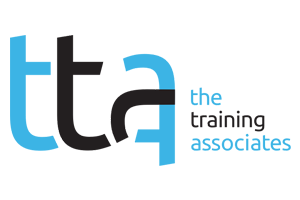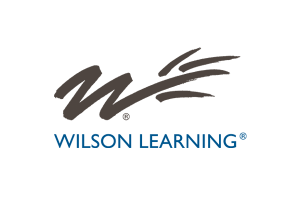If the global COVID-19 pandemic has taught us anything, it’s that change management is a critical skill that can make or break an organization. It was true long before the virus began spreading around the world, but 2020 launched wave after wave of change that pushed even the most nimble organizations to their limits.
This year, learning and development (L&D) professionals have played a key role in helping their organizations respond to the pandemic. They pivoted employee onboarding and learning programs online, often over a matter of days. They also had to rapidly build new learning solutions for everything from hygiene practices to work-from-home strategies to contactless products to conversations about systemic oppression and privilege.
Prior to the pandemic, L&D professionals were not always invited to the change management table — but they should have a permanent seat. In fact, they should play a lead role in every initiative that is tied to an organization’s success.
The organizations that previously empowered their L&D professionals to drive change have been infinitely better off these past few months. They could tap into the knowledge and skills that already existed, just ramping up the pace and intensity to match this crucial moment in history. The L&D professionals who had to drive change while teaching change skills had a much heavier lift, and their organizations were not positioned to respond as quickly.
Let’s take some time to mark this moment. Learning is intimately tied to any critical skill but especially to change management, because it’s woven into so many aspects of organizational success. It’s needed for onboarding new talent, increasing productivity and engagement, launching new products and services, and changing any kind of workplace behavior. And yes, also responding to a global pandemic, social unrest and climate change.
Change Management Is a Professional Skill
Change management is a skill, and it can be taught and learned like other professional skill, such as using a computer, communicating effectively and leading a team. L&D professionals can enhance their organization’s success by providing training on change management.
Change management is much more than a plan to execute a specific change initiative. The best change training programs focus on people, because humans are biologically wired to resist change. Our brain instinctively sees change as potential danger until enough information proves otherwise. In the absence of a clear narrative, our brain creates its own, opting to base it on the worst-case scenario since doing so is most likely to protect us.
In addition, we are creatures of habit, forming well-grooved neural pathways for behaviors we do frequently. Change always asks people to develop new habits, something that takes, on average, 40 to 50 repetitions to do.
When change fails, it’s usually not because the change itself was ill conceived or poorly designed but, rather, because leaders did not communicate effectively or lead appropriately, triggering even more resistance. When senior leaders and managers understand the biology of change, they can do a much better job of leading people and helping them become more adaptive and resilient.
Provide Role-specific Skills
L&D professionals can also provide role-specific skills to all levels of the organization so they can work in concert. Change training must be stratified to give each level the right knowledge and skills for their unique role in driving successful change.
Senior Leaders and Executives
Senior leaders need to know how to lead their organization to achieve strategic goals, which includes the ability to:
-
- Analyze their market/industry and correctly identify when change is needed.
- Assess the organization’s capacity and readiness for change.
- Design effective change that will drive the desired results.
- Accurately anticipate and respond to resistance.
- Provide the right kinds of messaging and guidance as the change unfolds.
- Analyze the results of the change initiative and adjust as needed for future change.
Managers
Managers need the skills to lead their team through change, including:
-
- The emotional intelligence to handle the messy emotions that come with resistance to change.
- The ability to understand the change that occurs from above and troubleshoot issues that need to be resolved.
- The ability to convey clear and consistent messages about the change.
- The ability to use different methods to motivate and engage people through the different stages of change.
- The ability to recognize and reward effort and progress, ensuring that the team meets its goals.
Employees
Employees also need skills to drive effective change. They benefit from the ability to:
-
- Understand how to manage the biology of resistance.
- Take personal responsibility for their reactions to reduce the stress of change.
- Compensate for ineffective managers or poorly designed change.
- Identify when and how to bring their best effort forward to achieve the desired goal.
In addition to employees, change initiatives sometimes impact other stakeholders like customers, clients or vendors. L&D professionals can and should help these critical populations with change management skills.
All levels of the organization would also benefit from knowing more about change fatigue and how to combat it. In a 2015 Ketchum survey, 74% of respondents said they saw change fatigue in their organization, and 39% said it was “highly pervasive.” Now, according to a July survey by Monster, almost 70% of people are experiencing burnout.
As organizational psychologist Dr. Tasha Eurich wrote for the Montgomery Advertiser, “For organizations, it isn’t just a moral imperative to combat burnout — there’s a financial one too. Healthcare costs associated with burnout in the US approached $200 billion, and that was before the pandemic.”
Scaffold Specific Change Initiatives With Additional Learning
L&D professionals can further boost their organization’s success by scaffolding any specific change initiative with focused training, customized to that unique project and timeline. It can include deeper dives into change management strategies or related skills like project execution, collaboration and communication. It can also focus on the people and teams responsible for that change, ensuring that everyone is aligned to the expectations and ready to deliver. It might also be a great time to also identify potential roadblocks or challenges and create relevant solutions.
It’s clear that organizations that are thriving during the pandemic are the ones where L&D professionals had already put change training into place, with each member of the organization trained in level-specific skills. They were then able to focus on applying that grounding of training to accelerate people’s response and resilience during these difficult times.
2020 has shown us that significant change can hit at any time and from a myriad of sources. All organizations should use this year as a wakeup call and put in place significant change management training, as it’s a strategic skill that will benefit the organization well into the future.
In addition, L&D professionals should use this opportunity to further establish themselves as a critical component to strategic success, which includes focusing on other critical skills like enhancing innovation, increasing collaboration and building high-performing teams.









